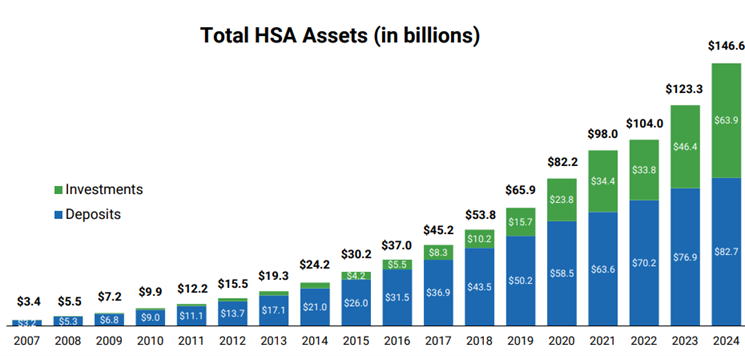Today, there is more than $100 billion across 35-plus million HSA accounts [1]. That balance is estimated to continue to grow by at least 10 percent per year [1].
For individuals with HSA accounts, these funds represent a growing pool of healthcare-only capital that the consumer — not the provider or the insurer — is directing. That comes with both opportunity and responsibility.
Over this same time period, the American population has seen a dramatic rise in the prevalence of chronic conditions [2]. In 2000, estimates were that 44 percent of the US population carried at least one chronic condition [3]; by 2013, that number grew to 57 percent [4]. In short, Americans have been tasked with taking more control of their healthcare spend while simultaneously becoming less healthy.
Now more than ever, consumers are increasingly interested in being proactive about their health. Recent advancements in technology, diagnostics, and screening tools are enabling individuals to be more educated and ambitious about their health. Biomarker and gut health testing, wearables, and AI-driven tools are putting more personalized and actionable data in the hands of anyone who wants it. What used to be ‘an apple a day keeps the doctor away’ can now be specifically a Honeycrisp for John and a Granny Smith for Jane!
And it’s not just about access to tools — it’s also about mindset. The modern healthcare consumer is more educated, more curious, and more engaged. People are no longer waiting to be told what to do; they're coming to the table with questions, data, and a desire to optimize. This behavior shift is not only influencing individual outcomes — it’s also driving healthcare providers and innovators to rethink how care is designed, delivered, and communicated to patients.
New Harbor’s healthy living and wellness thesis seeks to support increasing consumer access to innovative care models to meet shifting demographic preferences toward healthy alternatives and proactive lifestyle changes.
An example of this shift to a healthy living approach is New Harbor’s investment in FYZICAL Therapy and Balance Centers. The outpatient physical therapy market is well-known – people get injured and need rehab to recover. However, what is lesser known is that falls are a leading cause of death in the elderly, with one in four older adults reporting falling every year [5]. FYZICAL aims to increase access to balance therapy through proprietary and personalized services which help individuals proactively meet their mobility goals. With better balance, many lives could be extended, not only in years but also in quality of years.
At New Harbor Capital, we are excited about the future of consumer-led healthcare and seek to partner with and support healthcare companies that are working to advance consumers’ ability to spend smarter, be proactive, and better meet personal health goals.
Share this post with your networks via the buttons below!
Questions? Reach out to us at info@newharborcap.com today.
[1] https://www.devenir.com/wp-content/uploads/2024-Year-End-Devenir-HSA-Research-Report-Executive-Summary.pdf
[2] Defined as conditions that last a year or more and require ongoing medical attention or limit activities of daily living, or both.
[3] American Hospital Association – Health for Life – Fall 2007
[4] American Hospital Association – Trendwatch Chartbook 2018
[5] https://www.cdc.gov/falls/data-research/index.html; Elderly defined as those 65 and older

